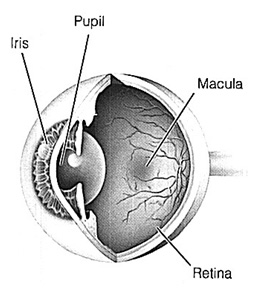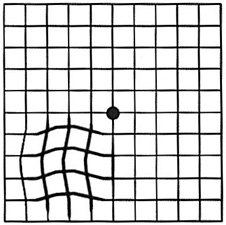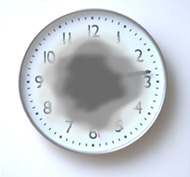Age-related macular degeneration (AMD) is one of the most common causes of poor vision after age 60. AMD is a deterioration or breakdown of the macula. The macula is a small area at the center of the retina in the back of the eye that allows us to see fine details clearly and perform activities such as reading and driving.

The visual symptoms of AMD involve loss of central vision. While peripheral (side) vision is unaffected, with AMD, one loses the sharp, straight-ahead vision necessary for driving, reading, recognizing faces, and looking at detail.
Although the specific cause is unknown, AMD seems to be part of aging. While age is the most significant risk factor for developing AMD, heredity, blue eyes, high blood pressure, cardiovascular disease, and smoking have also been identified as risk factors. AMD accounts for 90% of new cases of legal blindness in the United States.
Nine out of 10 people who have AMD have atrophic or “ dry” AMD, which results in thinning of the macula. Dry AMD takes many years to develop. A specific vitamin regimen has been shown to slow progression of dry AMD.
Exudative or “ wet” AMD is less common (occurring in one out of 10 people with AMD) but is more serious. In the wet form of AMD, abnormal blood vessels may grow in a layer beneath the retina, leaking fluid and blood and creating distortion or a large blind spot in the center of your vision. If the blood vessels are not growing directly beneath the macula, laser surgery is usually the treatment of choice. The procedure usually does not improve vision but tries to prevent further loss of vision. For those patients with wet AMD whose blood vessels are growing directly under the center of the macula, a procedure called photodynamic therapy (PDT), which causes fewer visual side effects, is sometimes used. Intravitreal injections of certain medications can also be used in these cases.

Promising AMD research is being done on many fronts. In the meantime, high-intensity reading lamps, magnifiers, and other low vision aids help people with AMD make the most of their remaining vision.

With AMD, dark areas may appear in your central vision








